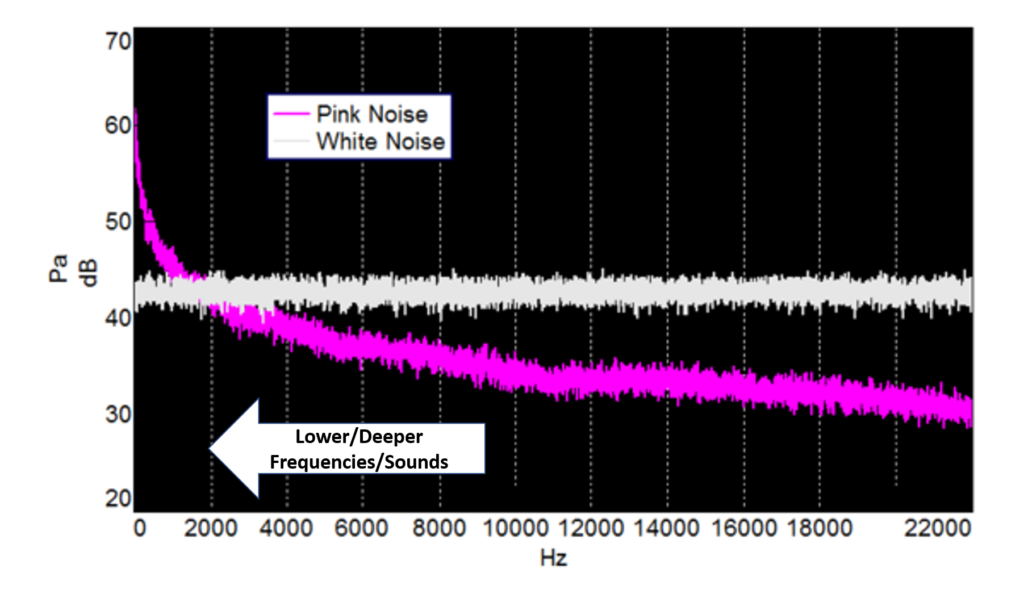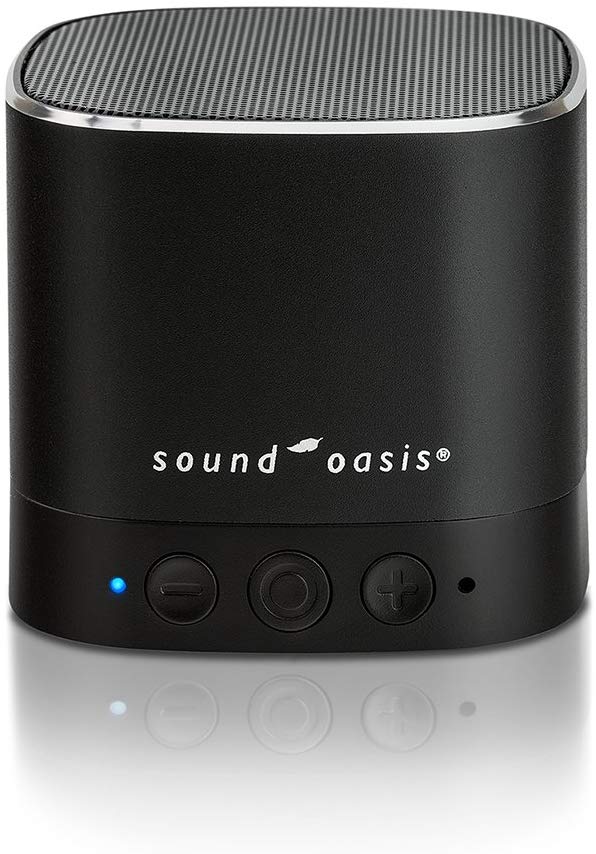Have you ever had a difficult time dropping off to sleep? If so, you’re not alone. According to the CDC, 1 in 3 American adults don’t get enough sleep each night. Absence of sleep can make it tough to focus. It can also negatively affect your mental and physical health over time.
Frequently, white noise is recommended for sleep difficulties, but it’s not the only sound that can assist. Other sonic shades, like pink noise, may also enhance your sleep.
Keep checking out to discover about the science behind pink noise, how it compares to other color spectrum sounds, and how it might help you get an excellent sleep.
What Is Pink Noise?
The color of noise is established by the energy of the sound signal, and how this energy is distributed over numerous frequencies.

Pink noise includes all frequencies we can hear, however, the energy isn’t similarly dispersed across them. It’s more extreme at lower frequencies, which produces a deep noise.
Nature is full of pink noise. Here are some examples:
- rustling leaves
- stable rain
- wind
- heartbeats
To the human ear, pink noise sounds steady.
Can Pink Noise Help You Get A Much Better Night’s Sleep?
Because your brain continues to process sounds as you sleep, different noises can affect how well you rest.
Some noises, like honking cars and trucks and barking dogs, can stimulate your brain and interrupt sleep. Other sounds can relax your mind and promote much better sleep.
These sleep-inducing noises are sometimes called sleep aids. You can listen to these on a computer, mobile phone, or sleep machine like a white noise maker.
In a research study in the Journal of Theoretical Biology, scientists discovered that consistent pink noise reduces brain waves, which increases steady sleep.
Frontiers in Human Neuroscience released a study in 2017 which found a positive link in between pink noise and deep sleep. Deep sleep supports memory and assists you to feel refreshed in the morning.
How Does Pink Noise Compare To White, Brown And Black Noise?
Sound is categorized with numerous colors. These color sounds, or sonic colors, depend upon the intensity and distribution of energy.
There are many color sounds, consisting of:
White Noise
White noise consists of all audible frequencies. Energy is similarly distributed throughout these frequencies, unlike the energy in pink noise.
The equal distribution develops a consistent humming noise.
White noise examples include:
- whirring fan
- radio or TV static
- hissing radiator
Given that white noise includes all frequencies at equivalent intensity, it can mask loud sounds that stimulate your brain. That’s why it’s often advised for sleeping difficulties and sleep conditions like insomnia.
Pink noise
Pink noise is much deeper than white noise. Think about it like white noise with a bass rumble. Nevertheless, compared to brown noise, pink noise isn’t as deep.
Brown Noise
Brown noise, likewise called red noise, has higher energy at lower frequencies. This makes it much deeper than white and pink noise.
Examples of brown noise consist of:.
- strong waterfalls
- thunder
Though brown noise is much deeper than white noise, they sound similar to the human ear.
There’s not enough research available to support the effectiveness of brown noise for sleep. However, according to anecdotal evidence, the deepness of brown noise can induce sleep and relaxation.
Black Noise
Black Noise is a casual term utilized to describe the absence of sound. It refers to total silence or near-total silence with bits of random noise.
While it might be challenging to find complete silence, it can assist you to sleep at night. Many people feel most unwinded when there is little to no sound.
Where Can You Find Pink Noise To Help You Sleep?
You can check out pink noise for sleep by listening on your computer or smart device. There are various on-line sound generators available. Here’s one I created that plays 10 hours of ad-free pink noise on a black background.
Mobile phone apps like NoiseZ likewise provide recordings of different sound colors.
Some sound machines play pink noise. Before buying a machine, make certain it plays the sounds you’re looking for. An example is the Sound Oasis Pink Noise Bluetooth Sound Machine, available on Amazon (and elsewhere).
The best way to utilize pink noise depends on your preferences. For example, you might feel more comfy with earbuds rather than headphones or playing pink noise on a computer or tablet.
You’ll also need to figure out what volume of sound works best for you or your baby if you’re using color sounds to help them sleep.
Important Pointers For Getting a Great Sleep
Although pink noise can help you sleep, it’s not a silver bullet. Good sleep practices are still essential for quality sleep.
To get a night of great sleep, you need to follow some common-sense guidelines:
- Follow a sleep schedule. Wake up and go to bed at the same time every day. Consistency is key.
- Avoid stimulants before going to bed. Nicotine and caffeine will keep you awake for several hours, and alcohol also disrupts your body clock and reduces quality sleep.
- Workout regularly. Physical activity throughout the day will help you feel worn out at night. Avoid strenuous exercise a couple of hours prior to bed.
- Limit naps. Snoozing can also interrupt your sleep schedule. If you require to nap, limit yourself to 30 minutes or less.
- Bear in mind food intake. Avoid eating big meals a few hours prior to sleeping. Consume a light snack like a banana or toast if you’re starving.
- Make a bedtime regimen. Do some relaxing activities 30 to 60 minutes before you go to bed. Meditating and stretching can soothe your body and brain.
- Switch off bright lights. Artificial lights reduce melatonin and stimulate your brain. Avoid lights from smartphones and TV screens an hour before bed.
The Bottom Line
Pink noise is a sonic hue, or color noise, that’s much deeper than white noise. When you hear constant rain or rustling leaves, you’re listening to pink noise.
There’s some proof pink noise can decrease brain waves and promote sleep, however, more research is needed. It also isn’t a quick fix for sleep problems. Great sleep practices, like following a schedule and restricting naps, are still essential.
If changing your sleep practices does not work, talk with your medical professional. They can assist you to determine the very best approach for getting quality sleep.
